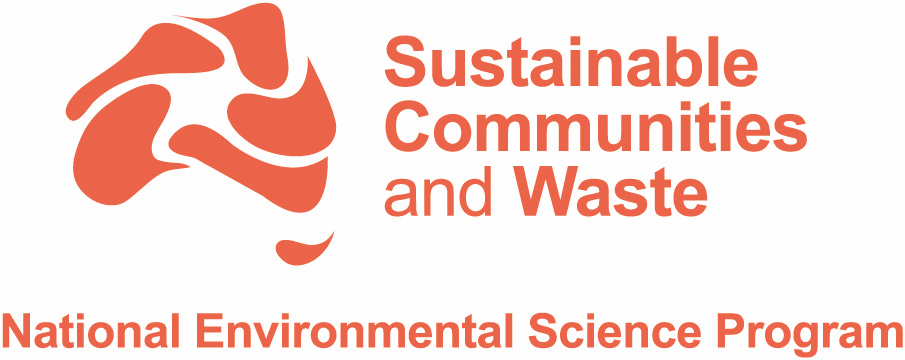In this new op ed, Veena talks about how we are on the cusp of a new epoch, the materials revolution, as sustainability joins economic outcomes driving the next industrial age.
The Industrial Revolution brought enduring benefits to humanity, notwithstanding the social and environmental costs. More recently, the information revolution resulted in an explosion of digital tools and new technologies and businesses. Now, writes Professor Veena Sahajwalla, we are on the cusp of a new epoch: the materials revolution.
Community, government and international concerns around our waste and recycling challenges are converging, with a growing willingness across societies to embrace the issues we face. The materials revolution values the sustainability of all the materials we use from our planet, which are essentially finite in supply.
Fast fashion and consumption have outpaced society’s ability to effectively deal with the consequences of a throw-away mentality, such as overflowing landfills, waste stockpile fires, and pollution of our waterways and atmosphere.
A growing understanding about materials sustainability is juxtaposed against a consumption mentality for convenience and cheaper materials and products. We need to rethink our attitudes to the resources we rely on for our societies to function, and rethink our approaches to waste.
The fact is that waste is, and should be treated as, a renewable resource.
We need to add ‘reform’ as a fourth R to the three Rs of reducing, re-using and recycling unwanted products and materials, which we erroneously call waste. New technologies are emerging to demonstrate we can reform waste into new materials and products in ways traditional recycling does not.
This is not so say that traditional recycling methods and processes are unwanted – they play a vital role in managing our waste. But what we need are new ways of recycling mixed and complex waste items like electronic waste (e-waste), to extract and reform the valuable materials they contain, like rare earths and metals. New government policies include rare earths as a national priority but we could introduce as part of that priority a requirement to harness more sustainably the material resources contained in e-waste.
This reforming of many waste types will be a crucial step in the journey to create circular economies, where we keep materials in use for as long as possible.
Another key step is that we need to start designing products and systems differently so that materials that are no longer wanted can more easily circulate back into manufacturing. This is why I see a strong alignment of recycling and manufacturing occurring in the near future.
There are sobering reasons to get on with the job. The Government’s newly released National Waste Report 2020 shows our national waste increased to 74m tonnes a year. Of that, about 60% is estimated to be recycled, but Australia’s new waste export bans coming into effect from this year are expected to reduce the rate of recycling.
This is below the national resource recovery target of 80% by 2030, set in the 2019 National Waste Policy Action Plan. Not being able to send a lot of our waste overseas adds another urgent reason to embark on the materials revolution with new technologies.
Infrastructure Australia’s (IA) recent Priority List Report found that constraints on collection and processing, including product design and lack of sufficient demand, have led to recyclable waste ending up in landfill. The report lists as its highest priority the need for the nation to retool itself with waste and recycling infrastructure.
It says current constraints include lack of space for transfer facilities, the inability of material recovery facilities to process co-mingled, highly contaminated waste (particularly in remote and regional Australia), and under-developed domestic reuse markets due to over-reliance on the export of waste.
IA finds Australia must recycle an additional 650,000 tonnes of waste plastic, paper, glass and tyres onshore by 2024, putting further pressure on waste recovery and processing infrastructure.
Limited landfill capacity and sorting facilities are increasing logistics costs as waste is transferred greater distances for disposal. I see a huge opportunity to not only address these challenges but also use our innovative smarts to create new technologies, supply chains and jobs.
IA Chief Executive Romilly Madew rightly says: “We are at a crossroads between addressing existing infrastructure gaps and prioritising investments that will secure our future prosperity.”
We need a materials revolution where there is a much closer alliance between scientists and engineers doing research & development, and governments, industries and communities that can benefit from new discoveries and technologies to improve sustainability. Recycling in new ways can be a foundation for the manufacture of high-quality materials and products made from waste resources.
This new level of self-reliance can enhance sovereign capability in times of pandemic disruption, and lead to improved economic prosperity through the creation of new, and localised, supply chains. Recycling and reforming waste materials for completely new uses – for example isolating hydrogen from tyres or plastics to make green steel – should be at the centre of how we transform our sovereign manufacturing sector.
UNSW’s Sustainable Materials Research and Technology (SMaRT) Centre is helping to create the much-needed alignment of recycling and manufacturing by introducing new technologies to business partners, community groups and just about any stakeholder interested. Our newly developed MICROfactorie technologies are increasingly being used outside our laboratories to reform waste into new, value-added materials and products.
For instance, our Green Ceramics MICROfactorieTM module can transform materials such as glass, textiles and plastics ‑ not suitable for conventional recycling ‑ into new engineered products like floor and wall tiles, tables and other hard surfaces. Another module can reform e-waste plastics into filament as a feedstock resource for 3D printing.
Companies like Mirvac are embracing the challenges of being more sustainable and in March featured many of our Green Ceramics in a display apartment at its Pavillions development at Sydney Olympic Park. Mirvac CEO and Managing Director Susan Lloyd-Hurwitz CEO says the “take-make-waste approach is no longer acceptable”. She and her team are working hard to find a better, more sustainable way to provide homes and office buildings that are kinder to the planet.
NSW Environment and Energy Minister Matthew Kean commended the initiative and said the partnership “could be the blueprint for how we do sustainable development in the future”. Our journey to commercialise Green Ceramics would not be happening without valuable support from the NSW Government via its Office of Chief Scientist and Engineer’s Physical Science Fund.
My vision is for decentralised and modernised recycling and manufacturing in Australia. Increased funding from governments in this regard is extremely welcome, and while there is more to do we are making great progress.
The second round of the Federal Government’s National Environmental Science Program has stepped squarely into this space, committing to fund for seven years a new Sustainable Communities and Waste Hub, which I will lead with a consortium of research institutions, industry and community partners.
Enabling onshore waste processing, more sophisticated recycling, and reforming of ‘waste as a renewable resource’ as part of manufacturing must be central to the new materials revolution and Australia’s ongoing prosperity.

